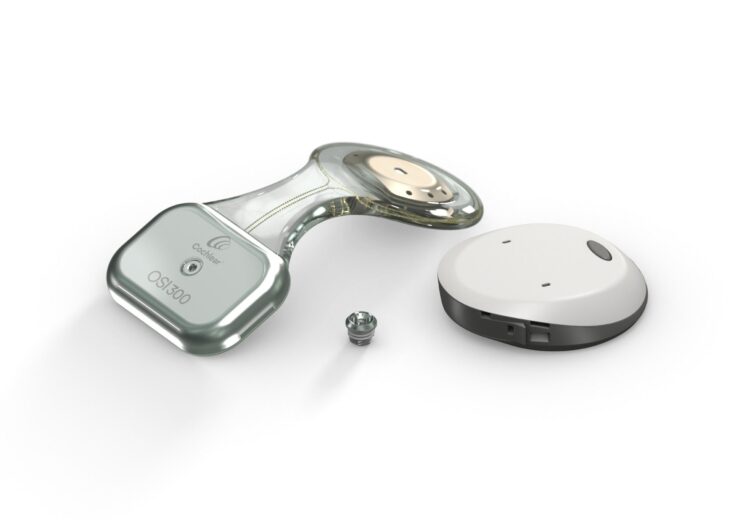The new-gen Osia active bone conduction system, which comes with the Osia OSI300 Implant, is intended to improve hearing outcomes for people with conductive hearing loss, mixed hearing loss and single-sided sensorineural deafness (SSD)

Osia Sound Processor and OSI300 Implant. (Credit: PRNewswire/Cochlear Limited)
Australia-based implantable hearing solutions provider Cochlear has rolled out its next-generation Cochlear Osia System, which enables MRI scanning at 3 Tesla.
Initially launched in 2020, the Osia System is an active osseointegrated bone conduction (OSI) bone conduction hearing solution that leverages digital piezoelectric stimulation.
The new-gen Osia System is intended to improve hearing outcomes for people with conductive hearing loss, mixed hearing loss and single-sided sensorineural deafness (SSD).
It comes with the Osia OSI300 Implant and provides superior hearing outcomes, ease of use, discreetness and reliability.
Cochlear said that the Osia System’s Piezo Power transducer, when combined with the next-gen implant magnet technology, enables the patient benefits.
Also, it is the first and only active bone conduction system that enables MRI scans at both 1.5T and 3T without the need for surgery, said the Australian medical device maker.
Cochlear intends to commercialise the next-gen Osia System across the US, with plans to extend it to other countries, subject to regulatory approvals.
Cochlear portfolio strategy and professional marketing head Ryan Lopez said: “Not only does the new design allow for MRI scans at 3.0 T without surgery or the need for a headwrap or splint kit; we have also designed the magnet cassette to be simple to remove if needed.
”The easy removal of the implant magnet reduces image artifact, an important consideration for maximum visibility of areas around the implant. Both features mean less MRI preparation time and less time without sound, which is beneficial to both recipients and professionals.”
According to Cochlear, axial magnets are used in most bone conduction implants and are unsuitable for a patient undergoing an MRI examination at 3T.
Its OSI300 Implant is specifically designed to support MRI examination at 3T, with no performance degradation after MRI exposure.
The implant leverages a diametric magnet, placed within a casing, and rotates to align with the magnetic field of the MRI machine.
Cochlear said that it aims to help people with hearing implants undergo MRI scans without obstacles.
Cochlear CEO and president Dig Howitt said: “An improvement in the ability of patients to undergo high-resolution MRI scans with our technology was the number one request we heard from customers.
“With the new system, patients with an active bone conduction system can conveniently undergo MRI at 1.5T and at 3T with no impact to their hearing – MRI should be accessible to everyone.”
